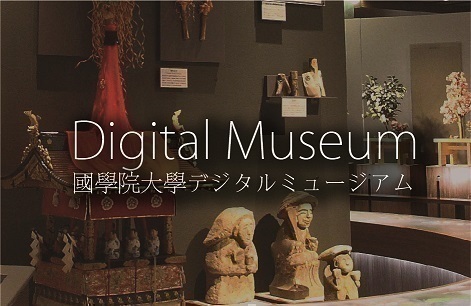- トップ
- Encyclopedia of Shinto
- Yashiro Hirokata
Encyclopedia of Shinto
| Main Menu: | |
| Links: |
詳細表示 (Complete Article)
| カテゴリー1: | 8. Schools, Groups, and Personalities |
|---|---|
| カテゴリー2: | Personalities |
| Title | Yashiro Hirokata |
| Text | (1758-1841) Tokugawa shogunal retainer and scholar of Japanese studies of the late Edo period. His common name was Tarō, his formal name was Akikata (which he later changed to Akitora and Akitake), and he had the epistolary name Rinchi. He was born in 1758 in Edo as the son of Tokugawa retainer Yashiro Yoshifusa. As the Yashiro house were a family of calligraphers, Hirokata was engaged at an early age as an apprentice to the Bakufu secretary (yūhitsu) Mori Masayoshi. In 1781 he served in the Bakufu's Kitchen of the West Bailey Nishinomaru daidokoro, in 1786 he was promoted to the Secretariat of the Main Bailey (honmaru fushoyaku), and in 1793 he was selected by Bakufu minister Matsudaira Sadanobu for assignment to the Inner Department of Surveys (okuyūhitsu) with the income of a Treasury Magistrate of one hundred bales of rice and later one hundred and fifty bales). With these experiences behind him, Yashiro was commissioned in 1792 as clerical assistant to Tokugawa Bakufu official Confucian scholar Shibano Ritsuzan, and along with Fuji Sadamiki participated in a survey of shrines and temples of the Kinki region (an area of western Japan that includes Osaka, Kyoto, and Nara). In his capacity as Bakufu records-keeper he contributed as editor to the production of such compilations as Kansei chōshū shokafu (a collection of genealogies of various important families of the Kansei era), Kunikagami (Mirror of the Domain), Hankanpu zokuhen (Further Collection of Domain Clan Genealogies), Kokin yōkankō (Important Manuscripts of the Kokin wakashū), and the Kanjōroku, among others. In 1811 Yashiro was given the post of Special Consultant for Correspondence with Korea (chōsen henkan goyō). He received instruction from Hanawa Hokiichi, Reizei Tamemura and Tameyasu, Yamamoto Hokuzan, and Narushima Motonao, and also corresponded in a friendly matter on a wide variety of topics encompassing Japanese, Chinese, and Western learning with such preeminent scholars as Hirata Atsutane, Ōta Nanbo, Kondō Jūzō, Oyamada Tomokiyo, Takami Senseki, and Watanabe Kazan. These collegial connections led to his assistance in the editing of the Gunsho ruijū, Hanawa Hokiichi's encyclopedic compendium of historical texts. His scholarly correspondence also inspired his endeavor to collect printed materials and ancient archaeological specimens in his estate by Shinobazu Pond in Edo (now part of Ueno Park, Tokyo), which he preserved in a storage house dubbed the Shinobazu Book Repository. These activities established his reputation as a librarian and as a scholar. He died in 1841 at the age of eighty-four, and was given the posthumous Buddhist ordination name (hōmyō) Rinchiin Taigi Senjō Koji. After his death, the collection of over fifty-thousand texts and historical objects maintained at his storehouse was donated to the lord of the Awa Tokushima Domain. However, the great majority of this collection was destroyed in wars and fires. In addition to the works mentioned above, Yashiro contributed as editor and compiler to the Kōyasan Daishi shinsekishoketsuchū (Annotated Compilation of the True Written Works of Kōbō Daishi), Sankō Ise monogatari (Reference for the Tale of Ise), Hirokata zuihitsu (Essays of Hirokata), Rinchi sōsho (Series of Works by Rinchi), Rinchi zatcho (Various Writings of Rinchi), Michi no sachi (The Happiness of the Way) and Sonzai sōsho (Extant Works), among other collections. —Mori Mizue |




